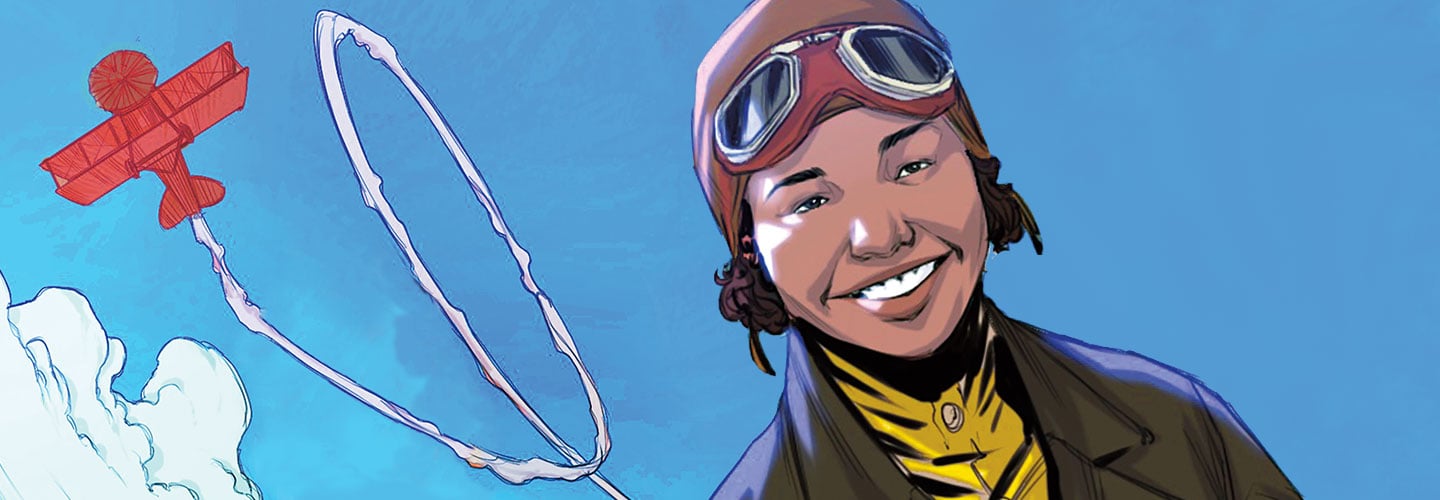In 1922, a small airplane flew in the shape of an eight high above a New York airfield. Suddenly, the plane shot down toward the ground. Seconds before it would have crashed, the plane swerved back up into the sky.
The brave pilot was Bessie Coleman. She was famous for her daring aerial stunts. But she was an aviation leader in an even bigger way. Coleman was the first Black woman in the United States to get a pilot’s license.
In 1922, a small airplane flew in the shape of an eight high above a New York airfield. Suddenly, the plane shot down toward the ground. Seconds before it would have crashed, the plane swerved back up into the sky.
The brave pilot was Bessie Coleman. She was famous for her daring aerial stunts. But she was an aviation leader in an even bigger way. Coleman was the first Black woman in the United States to get a pilot’s license.

